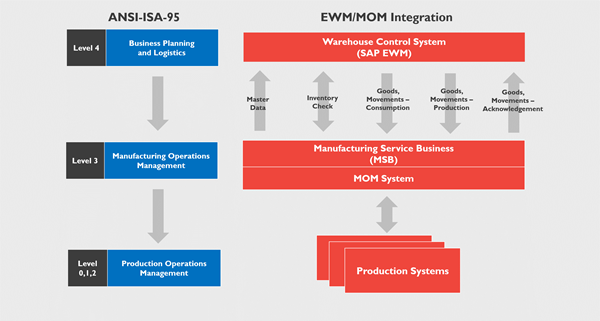ul.tick {
list-style-image: url(/-/media/New-Corporate-Folder/DUK/Discover-images/Blog/2019/Checklist-17-considerations-for-successful-EWM-and-MOM-intergration/icontick2.ashx??v=a6c3ba9f77914c90b6a4884b34680f51);
margin-top:30px;
}
Global SAP EWM & MOM implementations require the project teams to consider many complex design and implementation aspects. We have detailed here, 17 key areas that should be considered carefully during these phases of a project to ensure a fully operational integrated solution delivering the desired productivity and efficiency benefits;
 Architecture
Architecture
- MOM system strategy defined; one per site vs a single global instance?
- Master and slave systems modelled for flow of master and transaction data between SAP EWM & MOM
- Performance constraints considered in the integration design for fast moving production lines
 Data
Data
- Source system for material master and packaging specifications information defined
- Define frequency of master and transaction data updates across systems; real time or periodic processing?
- Global SAP Handling Unit number range strategy specified; especially when operating across multiple global independent MOM systems
- MOM & EWM case and pallet handling unit nesting and integration design confirmed
 Operational use
Operational use
- Batch, shelf life, material number, pallet/case numbers and quantities aligned across SAP EWM & MOM
- Method of MOM data entry evaluated and confirmed; Manual user input, scanning, RFID or automated scanning?
 Labelling
Labelling
- MOM & EWM label printing approach defined for end of line print and then optional reprinting of labels
- MOM end of line scanning and printing data elements and sources specified
- A single standard set of labels enabled to support the EWM & MOM design
 Testing Execution
Testing Execution
- Full end to end integration test scripts defined covering both EWM & MOM
- End to end integration and performance testing undertaken by Business Users, using real time data
- Operational performance testing executed when validating the EWM & MOM connectivity
 Error handling
Error handling
- EWM & MOM integration error validation and controls defined
- Systems error monitoring strategy confirmed
Successfully delivering this definitive list of actions will ensure a solid design foundation when integrating and delivering MOM and SAP EWM warehouse solutions, and ultimately help ensure you achieve productivity and efficiency with your warehouse operations.



/blog_3_720x360-(1).webp?mode=autocrop&w=320&h=240&attachmenthistoryguid=e58449dd-eb93-47fd-95b7-68a3c858da0a&v=&focusX=483&focusY=139&c=3c8cb7b38497bd1d59459f6171f3e647b044f670762500e1c7f4819b158590b0)

